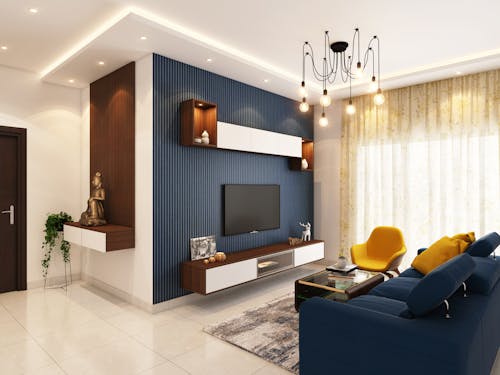“Create Your Dream Minimalist Living Room: A Guide to Simplicity and Style
In today’s fast-paced world, finding peace and calm at home is more important than ever. The **minimalist living room** trend isn’t just about stark white spaces; it’s about creating a functional, beautiful, and serene environment that reduces stress and promotes relaxation. A truly minimalist living room is a space where every item serves a purpose or brings you joy, free from unnecessary clutter. If you’re looking to transform your living area into a haven of tranquility, embracing minimalist design principles is the perfect starting point. This guide will walk you through the essential steps to achieve your ideal minimalist living room.
Understanding the Philosophy of Minimalist Living Spaces
At its core, a **minimalist living room** adheres to the principle of “less is more.” It’s about intentional living and conscious consumption. This approach encourages you to carefully select furniture and decor, focusing on quality, function, and clean aesthetics rather than accumulating many items. The goal is to create a feeling of spaciousness, openness, and calm.
Key Elements of a Minimalist Living Room Design
Creating a minimalist aesthetic requires thoughtful consideration of several key elements:
1. **Decluttering is Non-Negotiable:** The absolute first step to achieving a **minimalist living room** is rigorous decluttering. Go through everything. Ask yourself: Is this item essential? Do I use it regularly? Does it genuinely make me happy? Be brave and remove anything that doesn’t meet these criteria. Donate, sell, or discard items that are excess. Clear surfaces, shelves, and corners.
2. **Furniture Selection: Function and Form:** Choose furniture pieces that are simple, have clean lines, and are primarily functional. Opt for quality over quantity. A comfortable sofa, a simple coffee table, maybe an armchair – these are the essentials. Consider multi-functional furniture, like an ottoman with storage or a modular sofa that can be reconfigured. Avoid oversized or overly ornate pieces that visually clutter the space.
3. **Embrace a Neutral Color Palette:** Minimalist design thrives on a neutral base. Think whites, creams, grays, beiges, and soft pastels. These colors create a sense of calm and make the space feel larger and brighter. You can add depth and warmth through textures (like a cozy throw blanket or a textured rug) or with very limited pops of muted color through carefully selected accessories.
4. **Strategic Lighting:** Lighting plays a crucial role in any space, but especially in a minimalist setting. Maximize natural light by keeping windows unobstructed. Supplement with simple, functional artificial lighting – a floor lamp for reading, a table lamp for ambient light. Avoid complex or overly decorative fixtures. Good lighting enhances the clean lines and openness of the **minimalist living room**.
5. **Mindful Decor and Accessories:** This is where many go wrong, thinking minimalism means *no* decor. Instead, it means *intentional* decor. Select a few meaningful pieces of art, a couple of healthy plants, or a small stack of beautiful books. Each item should be chosen with purpose, adding to the space’s aesthetic without creating visual noise. Avoid knick-knacks and collections displayed openly.
6. **Smart Storage Solutions:** A key to maintaining a **minimalist living room** is having designated storage for everything. Utilize closed cabinets, storage benches, baskets, and integrated shelving to hide away items like remotes, magazines, blankets, or other essentials. Keeping surfaces clear is paramount to the minimalist look.
Benefits of Living with a Minimalist Living Room
Transitioning to a minimalist living space offers numerous advantages beyond just aesthetics:
* **Increased Calmness and Reduced Stress:** A clutter-free environment often leads to a clutter-free mind.
* **Easier to Clean and Maintain:** Less stuff means less time spent cleaning and tidying.
* **Improved Focus and Productivity:** A serene space allows for better concentration.
* **Feeling of Spaciousness:** Even small rooms can feel larger with a minimalist approach.
* **Focus on Experiences, Not Things:** Encourages spending time with loved ones or on activities rather than being surrounded by possessions.
Conclusion
Designing a **minimalist living room** is an incredibly rewarding process. It’s about stripping away the unnecessary to reveal a space that is not only visually appealing but also deeply functional and peaceful. By focusing on decluttering, selecting purposeful furniture, using a calming color palette, optimizing lighting, being selective with decor, and implementing smart storage, you can transform your living area into a serene sanctuary that perfectly embodies the minimalist lifestyle. Start small, be consistent, and enjoy the incredible sense of calm and clarity that a minimalist living room brings.”




